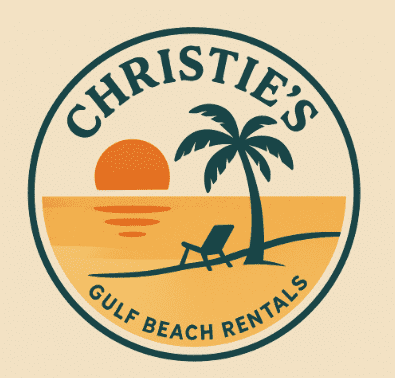Last updated on June 1st, 2025 at 10:56 pm
Why stop investing in your retirement just because you’ve started a business? Now is the perfect time to set up a business-sponsored retirement plan and take advantage of the higher contribution limits available to entrepreneurs. Your age isn’t a barrier—even if you’re already receiving Social Security benefits at 66 or 67.
With tax-advantaged options like a SEP IRA, Solo 401(k), or SIMPLE IRA, you can maximize your savings and reduce your taxable income. But to get the most out of these benefits, it’s crucial to understand the IRS contribution limits and tax rules for 2025—especially since earning business income in retirement can affect both your taxable income and Social Security taxation.
If you have an old 401(k) still with your old employer, read this article
Knowing the rules now can help you avoid costly surprises and make the most of your hard-earned money. Don’t forget to use our free Retirement Plan Selector Tool, the link is a the end of this article.
Why Small Business Owners Should Establish a Retirement Plan
Many self-employed business owners starting a small business after retirement might assume they don’t need another retirement plan because they already have a traditional IRA, rollover IRA, or Roth IRA from their past employment. However, setting up a new retirement plan can provide tax advantages, higher contribution limits, and additional investment opportunities that improve long-term financial security.
Maximizing Retirement Savings with High Contribution Limits
One of the biggest advantages of small business retirement plans is the higher contribution limits compared to a Roth IRA or a Traditional IRA.
- A SEP IRA allows employer contributions of up to 25% of net earnings, with a 2025 limit of $71,000—far greater than the Roth IRA limit of $7,000 ($8,000 for those 50 and older with catch-up contributions).
- A Solo 401(k) provides the opportunity for both employee contributions and employer profit-sharing contributions, reaching a total limit of $79,500 for those 50 and older.
- Defined benefit plans allow self-employed business owners to contribute even more, depending on net earnings and actuarial calculations.
By creating a SEP IRA, Solo 401(k), or a SIMPLE IRA plan, plan sponsors can contribute pre-tax income, reducing their taxable income while setting aside funds for future retirement benefits.
Transferring Rollover IRA Funds into a Roth IRA Takes Time
If you have a rollover IRA, you might be considering converting it into a Roth IRA for its tax-free retirement benefits. However, Roth conversions are taxable events, and transferring a large individual retirement account (IRA) into a Roth IRA can take years due to income taxes and annual conversion limits.
Instead of waiting to complete a Roth conversion over time, business income from a self-employed business can be directly contributed to a Roth Solo 401(k) or Roth IRA, allowing for Roth contributions at much higher limits than a typical IRA.
This investment strategy enables retirees to use business profits to grow a tax-free retirement account while continuing to earn an income.
A Tax-Smart Way to Reinvest Required Minimum Distributions (RMDs)
After reaching 73 years of age, individuals with traditional IRAs, SEP IRAs, and other qualified retirement plans must take minimum distributions (RMDs) under Internal Revenue Service (IRS) rules. These withdrawals increase taxable income, which could impact the taxation of Social Security benefits and increase total income taxes.
By reinvesting minimum distributions into a taxable investment account, exchange-traded funds (ETFs), mutual funds, or real estate, business owners can continue growing their savings. Some retirees use RMDs to fund Roth IRA contributions or invest in their businesses for long-term financial security.
Avoiding Social Security Taxation Through Tax-Deductible Contributions
For retirees who start a business while collecting Social Security, earned income could increase taxable income, making up to 85% of Social Security benefits taxable.
By contributing to a retirement plan such as a SEP IRA, SIMPLE IRA accounts, or a Solo 401(k), business owners can reduce their taxable income, lowering the potential tax on Social Security benefits.
- Tax deduction for plan contributions lowers net earnings.
- Elective deferrals to a Solo 401(k) reduce adjusted gross income.
- A profit-sharing contribution from the business further lowers taxable income.
This tax savings strategy allows business owners to invest their income for the future while managing Social Security taxation.
Tax Credits for Small Employers Under the SECURE Act
The SECURE Act provides tax credits to small employers who establish small business retirement plans like a SEP IRA, SIMPLE IRA, or 401(k).
- Businesses with fewer employees (1–50) can qualify for a tax credit of up to $5,000 for startup costs.
- Employer-sponsored retirement plans with automatic enrollment receive an additional $500 tax credit.
These tax incentives make it easier for sole proprietorships and small business owners to set up benefit plans while offsetting administrative fees.
Choosing the Best Plan for Your Business
Retirees who start a self-employed business should work with a tax advisor, financial advisor, or registered broker-dealer to select the best plan based on their unique situation.
- A SEP IRA is great for those with no eligible employees who want high employer contributions with minimal administrative costs.
- A Solo 401(k) works well for those looking for higher contribution limits and the ability to make employee and employer plan contributions.
- A SIMPLE IRA Plan is ideal for businesses with a small number of employees, offering a savings incentive match plan with matching contributions.
- A Defined Benefit Plan allows for even greater contributions, acting as a cash balance plan for retirees with high business income.
Final Thoughts: A Smart Investment in Your Financial Future
Starting a small business after retirement isn’t just about earning extra income—it’s an opportunity to maximize retirement savings, reinvest minimum distributions, and reduce taxable income while optimizing Social Security benefits.
✔ Using business income for SEP IRA or Solo 401(k) contributions helps secure financial stability.
✔ Roth contributions provide tax-free growth and withdrawals in retirement.
✔ Tax credits make establishing small business retirement plans easier.
✔ A tax advisor can help navigate IRS regulations, eligibility requirements, and plan contributions.
By taking advantage of higher contribution limits, profit-sharing plans, and tax deductions, self-employed business owners can make the most of their retirement years while securing their financial future.
Rolling Over an Old 401(k) or Traditional IRA into a New Retirement Plan for Your Small Business After Retirement
Many self-employed business owners who start a small business after retirement may have retirement benefits from a previous employer in the form of an old 401(k) or traditional IRA. Instead of leaving those funds dormant in a financial institution, rolling them over into a new retirement plan set up by their business can offer higher contribution limits, better investment options, and additional tax savings.
This process allows small business owners to consolidate their retirement savings options while maximizing taxable income deferrals and potential profit-sharing plans. However, understanding the rules, tax implications, and eligibility requirements is crucial.
Step 1: Rolling Over an Old 401(k) or Traditional IRA into a New Plan
Once you choose the best plan, rolling over your old 401(k) or traditional IRA can be done tax-free if executed correctly.
A. Direct Rollover (Tax-Free Option)
- 401(k) to SEP IRA or Solo 401(k): If you roll over funds directly from your old 401(k) to a SEP IRA or Solo 401(k), you avoid income taxes and penalties.
- Traditional IRA to SEP IRA: A direct transfer allows you to consolidate savings into a plan with higher contribution limits.
💡 Key Benefit: By rolling over funds into a tax-deferred account, you preserve your retirement savings and defer taxes until you begin taking minimum distributions.
B. Rolling Over to a Roth IRA (Taxable Event)
- You can roll over your 401(k) or traditional IRA into a Roth IRA, but this triggers taxable income in the year of the conversion.
- The amount converted is added to taxable income, potentially increasing Social Security taxation and your overall income taxes.
- However, once the funds are in a Roth IRA, future withdrawals are tax-free, and there are no minimum distributions.
💡 Strategy for Managing Taxes:
- Convert smaller amounts over a reasonable time to avoid a large tax hit in one year.
- Consider spreading conversions across multiple years of age to minimize tax impact.
- Consult a tax advisor to determine how much you should convert each year.
Step 2: Maximizing Employer Contributions and Tax Savings
Once your funds are in your new retirement plan, you can take advantage of higher contribution limits and profit-sharing strategies:
- Plan contributions from your self-employed business to reduce taxable income.
- Employer contributions to a SEP IRA can be as high as 25% of net earnings, significantly more than individual Roth IRA limits.
- If you are over 50, catch-up contributions allow you to save even more.
- Under the Secure Act, small employers receive a tax credit of up to $5,000 for starting a retirement plan, plus a $500 credit for implementing automatic enrollment.
💡 Using RMDs to Fund Your Business Contributions
- If you must take minimum distributions from an old 401(k) or traditional IRA, you can reinvest those funds by making Roth contributions to a Roth IRA or employee contributions to a Solo 401(k).
- This strategy allows you to effectively remove taxable income, pay taxes on it, and reinvest it tax-free.
Step 3: Investing for Your Financial Future
Now that your funds are in a new retirement plan, choosing the right investment options is crucial for financial security.
- Consider exchange-traded funds (ETFs), mutual funds, real estate, and profit-sharing contribution plans.
- Work with an investment advisor or registered broker-dealer to diversify assets.
- Monitor past performance and make adjustments based on market trends and personal goals.
Final Thoughts: Why Rolling Over to a Business-Sponsored Plan is a Smart Investment
For self-employed business owners, rolling over old retirement accounts into a new employer plan offers several benefits:
✔ Higher contribution limits with tax savings.
✔ More investment options to grow net earnings.
✔ Tax deductions reduce taxable income, lowering Social Security taxation.
✔ Rolling over into a Roth IRA provides tax-free growth, but requires paying taxes upfront.
✔ Utilizing profit-sharing plans and tax credits for small employers.
✔ Avoiding early withdrawals and minimum distributions mismanagement.
By taking control of your retirement savings through a SEP IRA, Solo 401(k), or other small business retirement plans, you can maximize contributions, protect your financial future, and create a lasting investment strategy for retirement.
💡 Need tax advice? Consult a tax advisor or financial advisor to help choose the best plan for your unique situation.
1. Business Retirement Plans for Self-Employed Business Owners in 2025
If you are self-employed or own a small business, you can set up a retirement plan that allows your business to contribute to your retirement savings while reducing your taxable income.
A. SEP IRA (Simplified Employee Pension IRA) – 2025 Rules
- Employer-only contributions: The business (not the individual) makes contributions.
- 2025 Contribution Limit: Up to 25% of compensation or $71,000, whichever is lower.
- Tax-deductible contributions: Reduce business taxable income.
- Flexible contributions: You are not required to contribute every year.
- No catch-up contributions for individuals 50 or older.
💡 Social Security Impact: Receiving Social Security benefits does not affect your ability to contribute to a SEP IRA as long as you have earned income from the business.
B. Solo 401(k) (Self-Employed 401(k)) – 2025 Rules
Designed for self-employed individuals and business owners with no employees (except a spouse).
Solo 401(k) Contribution Limits for 2025
- Employee Contributions (Salary Deferrals):
- Up to $23,500 (or $31,000 if age 50+ with a catch-up contribution).
- Cannot exceed 100% of net earnings from the business.
- Employer Contributions (Profit Sharing):
- Up to 25% of net earnings (20% for sole proprietors).
- Combined employer + employee contributions cannot exceed $71,000 (or $79,500 if age 50+).
💡 Social Security Impact:
- Social Security benefits are not reduced after age 67, even if you earn business income.
- However, high business income may make 85% of Social Security benefits taxable.
- Contributing to a Solo 401(k) lowers taxable income, potentially reducing the taxation of your benefits.
C. SIMPLE IRA (Savings Incentive Match Plan for Employees) – 2025 Rules
Ideal for small businesses with up to 100 employees, including self-employed business owners.
- Employee Contribution Limit (2025):
- Up to $16,500 (or $19,500 if age 50+).
- Employer Contributions Required:
- Either a dollar-for-dollar match up to 3% of compensation OR
- A fixed 2% contribution for all employees (even if they don’t contribute).
💡 Social Security Impact:
- Social Security benefits are not affected by SIMPLE IRA contributions.
- Since employer contributions are mandatory, you must plan for these additional business expenses.
2. How Social Security Benefits Impact Retirement Plan Contributions (2025)
If you continue working and earn income while receiving Social Security after age 67, here’s what you need to know:
A. No Earnings Limit After Full Retirement Age (FRA)
- If you are 67 or older, your Social Security benefits will not be reduced, regardless of how much you earn.
- You can still contribute to business-sponsored retirement accounts as long as you have earned income from the business.
B. Taxation of Social Security Benefits Based on Total Income
Even though Social Security is not reduced, it may become taxable if your total income exceeds certain limits.
2025 Social Security Taxation Rules:
- If combined income(Social Security + other earnings) is between:
- $25,000 – $34,000 (single) → Up to 50% of benefits taxable.
- $32,000 – $44,000 (married filing jointly) → Up to 50% of benefits taxable.
- If combined income exceeds:
- $34,000 (single) or $44,000 (married) → Up to 85% of benefits taxable.
💡 How to Reduce Taxable Income:
- Making contributions to a Solo 401(k) or SEP IRA reduces taxable income.
- Using a Roth Solo 401(k) instead of a traditional 401(k) avoids future RMDs.
3. Self-Employment Taxes & Business Contributions (2025)
If you own a business and earn income, you must pay self-employment taxes:
- Self-Employment Tax (SE Tax):
- 15.3% tax rate (12.4% for Social Security + 2.9% for Medicare).
- Applies to net business earnings over $400.
- If net earnings exceed $168,600 (2025 Social Security Wage Base), additional earnings are not subject to Social Security tax (but still subject to Medicare tax).
💡 How to Lower Taxes:
- Business retirement contributions (SEP IRA, Solo 401(k)) reduce taxable business income.
- Using a Solo 401(k) Roth option avoids future required minimum distributions (RMDs).
4. Matching Contributions as a Business Owner
As a business owner, you are both:
✔ The employer (who contributes to the plan).
✔ The employee (who can make elective deferrals in a Solo 401(k) or SIMPLE IRA).
💡 Matching Contributions by Plan Type:
- SEP IRA → Only employer contributes, no personal deferrals.
- Solo 401(k) → Employer (business) and employee (you) can contribute.
- SIMPLE IRA → Employer must match up to 3% of salary or contribute 2% for all eligible employees.
5. Required Minimum Distributions (RMDs) in 2025
- Traditional SEP IRA, SIMPLE IRA, and Solo 401(k) accounts require RMDs starting at age 73.
- Roth Solo 401(k) accounts do not require RMDs.
- Continued contributions do not exempt you from RMDs, so plan for required withdrawals.
Takeaways (2025)
✔ You can contribute to a SEP IRA, Solo 401(k), or SIMPLE IRA while receiving Social Security benefits.
✔ Since you are over FRA (67+), your Social Security benefits are not reduced due to business earnings.
✔ However, high income can make up to 85% of Social Security benefits taxable.
✔ Contributions to a Solo 401(k) or SEP IRA reduce taxable income, helping lower Social Security taxation.
Your retirement fund contributions from the business
Don’t Forget This Crucial Budget Line Item When Starting Your Business After Retirement: Your retirement savings
When retirees start a business, they often create a detailed budget to track expenses like office supplies, marketing, insurance, and software subscriptions. But one of the most overlooked yet critical expenses is retirement contributions. Yes, this is a legitimate business expense up to the annual limit.
Many new business owners focus on revenue projections and operating costs but forget to pay themselves first when it comes to long-term savings. A business-sponsored retirement plan—such as a SEP IRA, Solo 401(k), or SIMPLE IRA—not only helps you secure your financial future but also provides significant tax advantages.
Factor in Retirement Contributions From the Start
As you build your business budget, include:
✅ Employer Contributions – If your business is funding part of your retirement, plan for the percentage of income you’ll contribute.
✅ Brokerage & Plan Management Fees – Some financial institutions charge small fees to manage your SEP IRA, Solo 401(k), or SIMPLE IRA. Factor these costs in.
✅ Annual IRS Contribution Limits – Stay informed about yearly limits to maximize tax benefits.
Why It Pays to Plan Ahead
The best part? Employer contributions to your retirement plan are tax-deductible—whether you operate as an LLC, S Corporation, or C Corporation. That means every dollar your business contributes lowers your taxable income, helping you keep more of what you earn while securing your future.
Before finalizing your budget, don’t let retirement contributions be an afterthought. Making this a priority from day one ensures you’re not just building a business—you’re building lasting financial security.
Don’t Overlook Your Spouse’s Role in Your Business—and Their Retirement Savings
When launching a business after retirement, many entrepreneurs naturally involve their spouses—whether officially or behind the scenes. Maybe your spouse handles the books, assists with marketing, or manages client communication. But did you know that if they’re legally employed by the business, they can also participate in your business-sponsored retirement plan and receive tax-deductible contributions?
How Your Spouse Can Benefit From a Business Retirement Plan
If your spouse earns a salary from your business, they may qualify for an employer-sponsored retirement plan—just like any other employee. Here’s how that can work:
✅ Solo 401(k): If you and your spouse are the only employees, they can participate in a Solo 401(k) with the same contribution limits as you. This effectively doubles the tax-advantaged savings available to your household.
✅ SEP IRA: A Simplified Employee Pension (SEP) IRA allows you to contribute up to 25% of your spouse’s compensation (subject to IRS limits) on their behalf, reducing the business’s taxable income.
✅ SIMPLE IRA: If your business has employees, a SIMPLE IRA allows your spouse to contribute through salary deferrals while the business matches contributions up to 3%.
Don’t Forget to Budget for Your Spouse’s Contributions
Including your spouse in the business means more than just splitting tasks—it also means accounting for their salary, payroll taxes, and retirement contributions in your budget. If your business contributes to their retirement plan, that’s an additional expense, but it’s also fully tax-deductible for the business.
The Bottom Line
If your spouse plays an active role in your business, formalizing their position and adding them to your retirement plan can be a smart financial move. Not only does this provide additional tax savings, but it also ensures both of you are building financial security together in retirement.
Before finalizing your business budget, take the time to factor in your spouse’s salary and retirement contributions—because when it comes to financial planning, two retirement accounts are better than one!
We have covered much in this article. It may seem overwhelming to some. I recommend that you consult financial advisors or your service providers for more specific information about their plans. This article did not cover investment management. This is where you work with your plan provider on the options available. They can direct you to the types of plans that may best suit your strategy.
Review your investment options with your broker
If you do not have an investment strategy, your investment broker can help with that as well. A word of caution about financial advisors. Always use a Fiduciary these individuals are not paid on commission. You pay them a fixed fee to help you manage your funds. Most people may not need a financial advisor if they are working with a larger brokerage such as Charles Schwab which provides free help and many articles.
📌 Frequently Asked Questions (FAQs)
What is the best retirement plan for a business started after retirement?
The best options include a Solo 401(k) for high contributions, a SEP IRA for simple setup, and a SIMPLE IRA if you have employees.
Can I contribute to a retirement plan while running a business in retirement?
Yes, if you earn self-employment income, you can contribute to plans like a Solo 401(k) or SEP IRA, which offer tax advantages.
Is a Solo 401(k) better than a SEP IRA for retirees starting a business?
A Solo 401(k) allows both employer and employee contributions, making it ideal for maximizing retirement savings, while a SEP IRA is simpler but limits contributions to employer-only.
Do I still qualify for Social Security if I start a business after retirement?
Yes, starting a business does not affect your eligibility for Social Security, but if you earn above a certain threshold before full retirement age, your benefits may be temporarily reduced.
Are there tax benefits for setting up a retirement plan for my business?
Yes! Contributions to retirement accounts like SEP IRAs and Solo 401(k)s are tax-deductible, reducing your taxable income.
Can I roll over my 401(k) into a new retirement plan for my business?
Yes, you can roll over funds from an old 401(k) into a Solo 401(k), SEP IRA, or Traditional IRA for continued tax-deferred growth.
What is the contribution limit for a Solo 401(k) in 2024?
For 2024, the limit is $69,000 (or $76,500 if age 50+) including both employee and employer contributions.
What happens to my retirement plan if I sell my business?
Your plan remains intact, and you can roll it into an IRA or another qualified retirement account without penalty.
Can I set up a retirement plan if I’m running a side business after retirement?
Yes, even part-time business owners can open and contribute to a SEP IRA or Solo 401(k) if they have self-employment income.
How do I set up a retirement plan for my post-retirement business?
Choose a plan (Solo 401(k), SEP IRA, SIMPLE IRA), open an account with a provider (like Vanguard, Fidelity, or Schwab), and start making contributions based on your income and goals.
Retirement Plan Selector – Tool
Click on the line above which will take you to our free retirement plan selector tool located at our Startingabusinessafterretirement.com website. This is where we store all of our tools and article archives.
Your call to action
Looking for more expert insights on starting a business after retirement? Visit StartingABusinessAfterRetirement.com to access our full series, explore helpful tools, and find step-by-step guidance tailored for retirees launching their own ventures.
For new articles in this series—plus expert advice on finance, lifestyle, retirement, real estate, and living on the Mississippi Gulf Coast—be sure to check back at RetireCoast.com. We’re constantly adding fresh content to help you make the most of your retirement journey!
RETIRECOAST PODCAST

250 Years: Price Stability Lost to Slow Inflation – RetireCoast
Discover more from RetireCoast.com
Subscribe to get the latest posts sent to your email.










